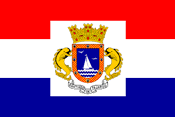
More and more people have been looking beyond the normal nine to five and making their own way in the world, creating an income they can rely on, one that is directly tied to their skills and abilities. Since people are working remotely due to COVID-19, this accelerated this trend.
Working as a freelancer or gig worker can also open up a world of tax savings possibilities. From retirement plans with generous contribution limits to health savings accounts to cover the high cost of private insurance to the ability to write off office supplies and other essentials, this class of workers enjoys some truly phenomenal tax breaks.
One of the most generous of those tax breaks is also one of the most misunderstood. The home office deduction has been around for decades, but many freelancers and members of the gig economy are still afraid to take it.
The idea that simply taking the home office deduction will trigger an audit is outdated but rooted in historical fact. In past decades, the home office deduction was widely regarded as a tax dodge, and the IRS often took a dim view of it.
Times have changed, however, and these days the home office deduction is no more likely to trigger an audit than any other business deduction. So should you take the home office deduction, and how can you tell if you are eligible? Here are some basic guidelines to go by.
Note: If you do find yourself under audit and owe the IRS money for back taxes, don’t try to fix it on your own! Reach out to our tax resolution firm and we’ll help you negotiate with the IRS and get tax relief. Contact – Ramon Ortega CPA.
Exclusive Use
One of the most important things to keep in mind is that your home office must be used exclusively for your business. Many freelancers and small business owners block off a section of their home and use it exclusively for their business, and that typically qualifies them for the home office deduction.
You do not have to give up large portions of your home to claim the home office deduction. Even a part of one room could qualify as long as it is distinct and separate from the rest of the area. You could, for instance, partition off a section of a spare bedroom and claim it as a home office.
Regular Use
In order to qualify as a home office, the space you claim must be used regularly as part of your business. If you block off a room or set of rooms, you cannot go back and forth between business and personal use.
If you plan to claim the home office deduction, it is a good idea to keep records of how the space is used. Keeping a log of the hours you spend there and the business activities you perform can help you back up the deduction if the IRS comes calling.
Primary Place of Business
The last part of the qualification process is the nature of the business and how the home office supports it. In order to qualify for the home office deduction, the space you designate must serve as your primary place of business.
That means your home office is where you meet with clients, where you perform your work and where you complete your business-related paperwork. If you rent space outside your home or regularly meet with clients somewhere else, you may not be able to justify the home office deduction in the event of an audit.
The nature of your business matters as well. If you work as a freelance writer or website designer, the IRS will probably not question your home office deduction. But if your primary source of freelance income is driving for Uber or Lyft, the tax agency may question the legitimacy of your home office.
Solid Recordkeeping is Essential
You should not be afraid to take the home office deduction if you are eligible for it, but you should be ready to back up your claim if the IRS comes calling. Solid recordkeeping is a must for freelancers and gig workers claiming a home office deduction, and those records should be highly detailed and readily available.
Keeping a daily log of your freelance and gig work activities is a good start. You can keep this log manually or electronically, but it should be up to date and complete. If you are diligent with your recordkeeping and eligible for the home office deduction, even a full-fledged audit could be no big deal.
The home office deduction is widely misunderstood and underutilized, especially in the age of gig work and widespread freelancing. If you are eligible for this generous deduction, you should definitely take it. Working for yourself is hard work, and every tax break you can get will make your efforts more valuable.
OWE BACK TAXES?
If you’re going to owe money to the IRS after filing your return, It’s important to note that only experienced firms like ours are able to handle tax debt cases since negotiating with the IRS requires specialized skills that often fall outside of the scope of most conventional accounting, tax, and tax law firms.
Our firm specializes in tax problem resolution. We have CPAs who can represent you before the IRS. We serve clients virtually so don’t hesitate to reach out. If you want an expert tax resolution specialist who knows how to navigate the IRS maze, reach out to our firm and we’ll schedule a no-obligation confidential consultation to explain your options to permanently resolve your tax problem. www.wesolveyourirsdebt.com.

Ramon Ortega CPA
Office in Weston, FL
1555 Bonaventure Blvd., Suite 1028
Weston, FL 33326
Weston 954-465-9315
Orlando 407-478-9262





 Albizu Campos also entered the ROTC while at Harvard, where he studied Military Science. He believed that military organization was necessary for Puerto Ricans to obtain a defensive structure. He volunteered in World War I and was sent to Puerto Rico as he had requested, and there he gained the rank of First Lieutenant and organized a company of Home Guards (a volunteer unit). After his discharge in 1919, he returned to Harvard to complete his studies.
Albizu Campos also entered the ROTC while at Harvard, where he studied Military Science. He believed that military organization was necessary for Puerto Ricans to obtain a defensive structure. He volunteered in World War I and was sent to Puerto Rico as he had requested, and there he gained the rank of First Lieutenant and organized a company of Home Guards (a volunteer unit). After his discharge in 1919, he returned to Harvard to complete his studies. Following the Río Piedras Massacre, two Nationalists assassinated Colonel Riggs in 1936, which ended in the arrest and charge of seditious conspiracy of Albizu Campos. He and eight other Nationalists were sent to Atlanta Penitentiary in 1937. Albizu Campos' health would begin to deteriorate during this first arrest.
Following the Río Piedras Massacre, two Nationalists assassinated Colonel Riggs in 1936, which ended in the arrest and charge of seditious conspiracy of Albizu Campos. He and eight other Nationalists were sent to Atlanta Penitentiary in 1937. Albizu Campos' health would begin to deteriorate during this first arrest.

 The city also has many museums showcasing Puerto Rican culture from the past and present. One of the most popular museums here is the Caguas Museum of History, housed in a building that was once the town’s City Hall. The museum presents the story of Caguas throughout time through five exhibits that include stone artifacts, skeletal remains, and ceramics.
The city also has many museums showcasing Puerto Rican culture from the past and present. One of the most popular museums here is the Caguas Museum of History, housed in a building that was once the town’s City Hall. The museum presents the story of Caguas throughout time through five exhibits that include stone artifacts, skeletal remains, and ceramics.












 The city is also a premiere beach destination with 46 beaches spread across its shoreline. The most popular beach in the area is the crescent-shaped Seven Seas beach. Lined with almond and palm trees, the shoreline is ideal for both water activities and relaxation. Seven Seas also has food kiosks, gazebos, camping areas, restrooms, showers, and parking.
The city is also a premiere beach destination with 46 beaches spread across its shoreline. The most popular beach in the area is the crescent-shaped Seven Seas beach. Lined with almond and palm trees, the shoreline is ideal for both water activities and relaxation. Seven Seas also has food kiosks, gazebos, camping areas, restrooms, showers, and parking. In July, the city holds a celebration in honor of its patron saint, Saint James the Apostle. This religious and cultural celebration, known as the Fiestas Patronales de Santiago Apostol, encompasses a wide range of activities, including live entertainment, parades, amusement rides, games, and offerings from regional restaurants and artisans.
In July, the city holds a celebration in honor of its patron saint, Saint James the Apostle. This religious and cultural celebration, known as the Fiestas Patronales de Santiago Apostol, encompasses a wide range of activities, including live entertainment, parades, amusement rides, games, and offerings from regional restaurants and artisans.